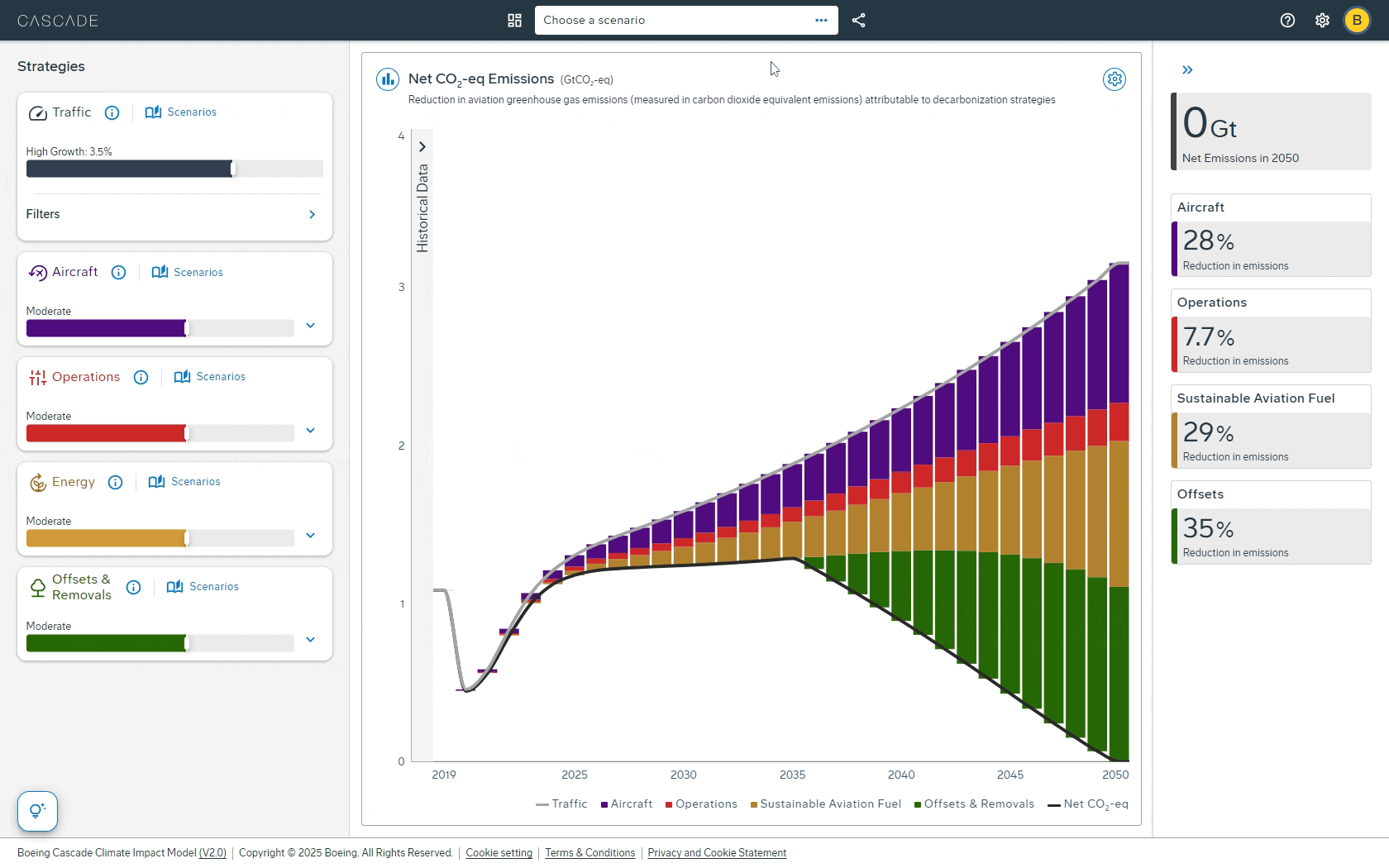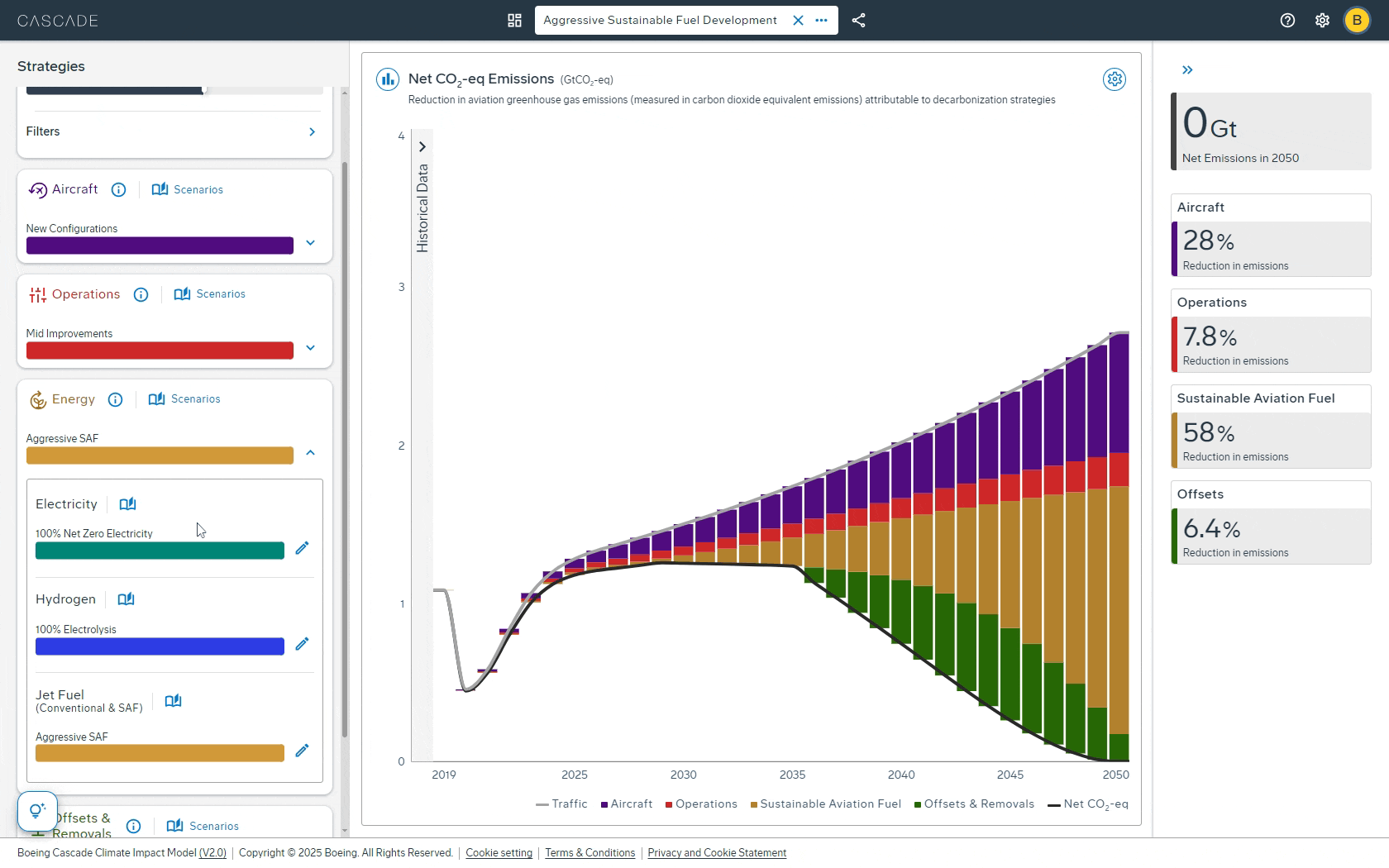Explore Industry Scenarios in Cascade
Cascade now offers a collection of ready-made scenarios for each strategy – traffic, aircraft, operations, energy, and offsets & removals – which are combined in unique ways to form overall net zero scenarios. These scenarios demonstrate what outcomes may be achieved from industry action, such as deployment of specific aircraft or energy technologies, and assess the interplay of strategies based on real-world constraints.
Overall scenarios can be accessed from the menu bar at the top of Cascade:

Source: Boeing Cascade Climate Impact Model (Version 2.0)
What scenarios are available?
Waypoint 2050 Scenario Adaptation
Most scenarios are adaptations from the Air Transport Action Group’s Waypoint 2050 report. This report, developed in 2021, is one of the premier resources for aviation’s path to net zero in 2050 due to its rigorous technical evaluation. The Waypoint 2050 scenarios span a range of ambition levels across strategies, resulting in vastly different emissions reduction contribution from each strategy:
Source: Boeing Cascade Climate Impact Model (Version 2.0)
IEA World Energy Outlook Scenario Adaptation
Electricity scenarios were adapted from the IEA’s World Energy Outlook, which assess the outlook for electricity by source under different policy scenarios. These scenarios are:
- Stated Policies: shows electricity generation that meets current policies
- Announced Pledges: analyzes the potential outcome for the energy sector if all climate objectives set by governments are achieved
- Net Zero Emissions: shows a potential pathway for the global energy sector to achieve net zero CO2 emissions by 2050, with advanced economies reaching net zero emissions in advance of others
Why were these scenarios adapted for use in Cascade?
Visualize what is required to achieve the scenarios
With Cascade’s plot options, it’s possible to see the energy and fleet required to meet each scenario. For example, let’s look at the amount of biomass needed to make the SAF required for the Aggressive Sustainable Fuel Development scenario:
Approximately 2 Gt of biomass will be required by 2050 in the scenario, most of which is sourced from waste and residue feedstocks.
Conduct what-if analysis from scenarios
Another benefit of the industry scenarios in Cascade is the ability to use pre-defined assumptions as a starting point to modify further and see the impact on emissions reduction. For instance, the Aggressive Sustainable Fuel Development scenario assessed above assumes that SAF is produced using 100% renewable electricity and green hydrogen. What if the “IEA Announced Pledges” electricity scenarios is assumed instead?

Source: Boeing Cascade Climate Impact Model (Version 2.0)
As seen above, the emissions reduction contribution of SAF in 2050 drops from 58% to 42%. Clearly, renewable electricity is critical for maximizing the potential benefit of SAF.
Try It Out:
With Cascade, a wide range of scenarios can be examined. For example, by comparing “Continuation of Current Trends” and “Pushing Technology & Operations,” the user can see the importance of new aircraft technologies and airspace operations.
Click here to learn how to use Cascade to create your own scenario.
Curious about the underlying assumptions of each scenario? Read our technical documentation.